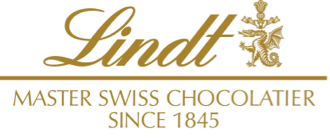Easter Bunny Origin - How Did the Bunny Become and Easter Symbol?
The Easter Bunny has long been associated with Easter - alongside other traditions such as chocolate Easter egg hunts, Easter parades, hot cross buns (or ‘Easter buns’), rabbit-shaped candies, and roast ham on Easter Sunday.
Like many of these traditions, the first mention of the Easter Bunny traces back centuries. But what are its exact origins and meanings?
Delve into the exciting history of the Easter Bunny (and our very own iconic GOLD BUNNY) to learn why it has become a symbol associated with this chocolate-filled occasion.
The Meaning Behind Easter and Its Traditions
Easter is marked by Good Friday and Easter Sunday in the calendar. It celebrates rebirth, renewal, and the arrival of spring.
Participating in Easter egg hunts, enjoying a family lunch and indulging in chocolate bunnies have become staples of the Easter celebrations in many households and ways to create long-lasting memories. Over time, Easter gifts have also become part of the holiday tradition – particularly chocolatey gifts in the form of the Easter Bunny.
Where does the Easter Bunny Originate?
The Easter Bunny's origins are not widely documented - at least not in one place.
One idea of the Easter Bunny's origins goes back to the 18th century when the Easter Bunny was thought to have been first introduced in the Pennsylvania Dutch area in America by German immigrants. They bought with them the story of the egg-laying hare named 'Osterhase' or 'Oschter Haws'. The egg-laying rabbit would give brightly colored eggs as gifts for well-behaved children. As part of the ritual, children created nests for the bunny to lay eggs in. This tradition eventually spread across the whole of North America.
Why Does the Easter Bunny Gift Chocolate Eggs?
Over time, Easter treats have become more varied and include chocolate eggs, chocolate bunnies, and even toys. But why does the Easter Bunny traditionally deliver eggs?
Similarly to the Easter Bunny, eggs are an ancient symbol representing fertility, rebirth, and new life. Eggs have also traditionally been boiled, painted, and decorated ahead of Easter Sunday feasts.
By the 19th century, decorating and hunting for eggs became a very popular activity around Easter time and was even adopted by the nobility, who would exchange beautiful, ornate eggs. Decorated hard-boiled eggs have also been used in the annual White House Easter Egg Roll race since its inception in 1878.
It was also during the 19th century that chocolate was introduced to Easter celebrations.
Today, eggs are still decorated in some communities as part of the Easter celebratory ritual. But chocolate Easter eggs (and bunnies) have become a popular modern tradition, which are commonly gifted and collected in baskets during Easter egg hunts.
The Easter Bunny Today
Our delectable GOLD BUNNY has brought the magic of Easter to people around the world for over 70 years. It comes with its own interesting story, which involves a Lindt Maître Chocolatier and his young daughter. The story goes that she saw a bunny hopping along the grass during the family’s Easter meal but by the time she got outside to play with it, the bunny vanished. Noticing her immense upset, her father decided to craft a bunny that she would always be able to find at Easter time, thanks to its little bell.
And so, the Lindt GOLD BUNNY was born – and it continues to bring joy and magic to Easter every year across the globe.
Lovingly crafted by the Lindt Maître Chocolatiers, our delightful GOLD BUNNY is made with fine ingredients and encased in golden foil, complete with its signature ribbon.
And there's more to get excited about. Get ready for Easter with Lindt's range of deliciously decadent Easter chocolate, featuring chocolate eggs for children and adults, and our classic GOLD BUNNY available in a variety of flavors.
